What is polyvinyl chloride
- 2025-02-19
Introduction
What is PVC?
Polyvinyl Chloride, commonly known as PVC, is one of the most widely used synthetic polymers in the world. It is a thermoplastic material, which means it can be melted and reshaped multiple times when heated. PVC is produced by the polymerization of vinyl chloride monomers. This process allows for the creation of a long chain of repeating units, giving PVC its unique properties. Its chemical formula is (C₂H₃Cl)ₙ, where n represents the number of repeating units in the polymer chain.
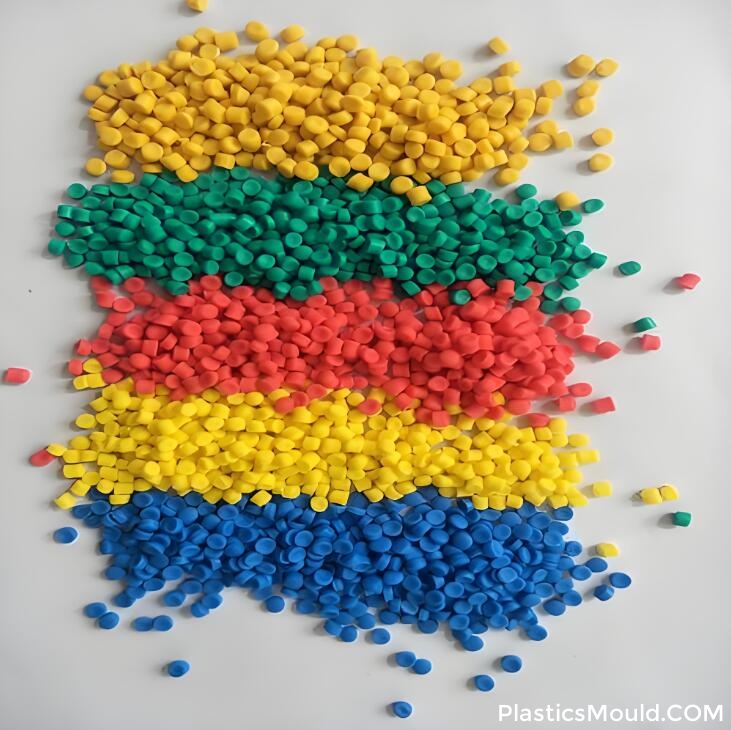
A Brief History of PVC
The discovery of PVC dates back to 1835 when the French chemist Henri Victor Regnault observed that when vinyl chloride was exposed to sunlight, it formed a white solid - the earliest known form of PVC. However, it wasn't until 1912 that the German chemist Fritz Klatte successfully synthesized PVC and patented the process. But at that time, the material was difficult to process and had limited applications.
In 1926, Waldo Semon, working for the B.F. Goodrich company in the United States, made a significant breakthrough. He developed a method to plasticize PVC by adding certain chemicals, which made PVC more flexible and easier to process. This innovation opened the door to a wide range of commercial applications for PVC. During World War II, PVC production increased significantly as it was used as a substitute for scarce materials like rubber and metal in various military applications, such as wire insulation and protective coatings. After the war, with the growth of the construction and consumer goods industries, the demand for PVC continued to soar, leading to its widespread use in modern society today.
The Science behind PVC
Chemical Structure and Composition
PVC is a polymer made from the polymerization of vinyl chloride monomers (VCM). The chemical formula of vinyl chloride is C₂H₃Cl. In the polymerization process, the double - bond in vinyl chloride (CH₂=CHCl) is broken, and the monomers are linked together in a head - to - tail manner to form a long - chain polymer, with the repeating unit of -CH₂-CHCl-. The general formula of PVC is (C₂H₃Cl)ₙ, where n represents the degree of polymerization, which can range from several hundred to several thousand, depending on the production process and the desired properties of the final product.
PVC is an amorphous polymer with a small amount of crystalline structure. The chlorine atoms attached to the carbon - carbon backbone of the polymer chain play a crucial role in determining its properties. The polarity introduced by the chlorine atoms increases the intermolecular forces between the polymer chains, which gives PVC higher strength and hardness compared to some other polymers like polyethylene. At the same time, the presence of chlorine atoms also makes PVC more resistant to chemical attacks and gives it excellent flame - retardant properties.
Production Processes
There are two main methods for producing PVC: the 电石 method and the ethylene method. Each method has its own raw materials, reaction processes, and cost - influencing factors.
calcium carbide method
The carbide method, also known as the acetylene - based method, is more commonly used in regions with rich coal resources. The production process starts with the production of calcium carbide (CaC₂). Calcium carbide is produced by heating a mixture of limestone (CaCO₃) and coke in an electric arc furnace at a high temperature (around 2000°C). The chemical reaction is as follows: CaCO₃→CaO + CO₂↑, and then CaO + 3C→CaC₂+CO↑.
Next, calcium carbide reacts with water to produce acetylene (C₂H₂) and calcium hydroxide (Ca(OH)₂). The reaction equation is CaC₂ + 2H₂O→C₂H₂↑+Ca(OH)₂. The acetylene gas is then purified to remove impurities such as hydrogen sulfide (H₂S) and phosphine (PH₃).
The purified acetylene reacts with hydrogen chloride (HCl) in the presence of a catalyst (usually mercuric chloride, HgCl₂) to produce vinyl chloride monomer (VCM). The reaction is C₂H₂+HCl→CH₂=CHCl. Finally, the vinyl chloride monomers are polymerized under the action of an initiator (such as azobisisobutyronitrile, AIBN) to form PVC.
The cost of the carbide - based PVC production is highly affected by the prices of raw materials such as coal, limestone, and electricity. Since coal is a major raw material for producing calcium carbide, fluctuations in coal prices can have a significant impact on the production cost of PVC. Additionally, the process consumes a large amount of electricity, so electricity prices also play an important role in determining the overall cost.
ethylene process
The ethylene - based method is more prevalent in regions with abundant oil and natural gas resources. In this method, the production of PVC begins with the production of ethylene (C₂H₄). Ethylene can be obtained from the cracking of hydrocarbons in oil or natural gas.
Ethylene reacts with chlorine (Cl₂) to form 1,2 - dichloroethane (EDC, C₂H₄Cl₂). The reaction equation is C₂H₄+Cl₂→C₂H₄Cl₂. Then, 1,2 - dichloroethane is thermally cracked at a high temperature (around 500 - 550°C) to produce vinyl chloride monomer (VCM) and hydrogen chloride (HCl). The reaction is C₂H₄Cl₂→CH₂=CHCl + HCl. The hydrogen chloride can be recycled and used in the previous step of producing 1,2 - dichloroethane through an oxychlorination reaction.
Similar to the carbide method, the vinyl chloride monomers are polymerized to form PVC. The cost of the ethylene - based PVC production is mainly influenced by the prices of crude oil, natural gas, and chlorine. As the price of crude oil is a key factor in determining the cost of ethylene, any fluctuations in the international crude oil market can directly impact the production cost of PVC.
Physical and Chemical Properties
PVC has a wide range of physical and chemical properties that make it suitable for a variety of applications.
Basic characteristics
PVC is a white powder in its pure form. It has a glass - transition temperature (Tg) in the range of 77 - 90°C. The glass - transition temperature is the temperature at which the polymer changes from a hard, glassy state to a more flexible, rubbery state. When heated above 170°C, PVC begins to decompose. This decomposition is mainly due to the elimination of hydrogen chloride (HCl) from the polymer chain. The reaction is autocatalytic, meaning that the released HCl can further accelerate the decomposition process. This poor stability to heat and light is a major drawback of PVC in its pure form, which is why stabilizers are often added during processing to improve its thermal and light stability.
other characteristics
Despite its vulnerability to heat and light, PVC has many other desirable properties. It is lightweight, with a density of around 1.4 g/cm³, which is much lighter than many metals and some other polymers. This makes it easy to handle and transport, and also reduces the weight of the final products.
PVC is an excellent insulator, with good thermal and electrical insulation properties. It can effectively prevent the transfer of heat and electricity, which is why it is widely used in applications such as insulation for electrical wires and cables, and in the construction industry for thermal insulation in buildings.
It is also highly resistant to moisture, making it suitable for use in humid environments. PVC is often used in plumbing systems for water pipes because it does not corrode or degrade when in contact with water.
PVC is inherently flame - retardant due to the presence of chlorine in its structure. When exposed to fire, the chlorine atoms in PVC can react with the flame, releasing hydrogen chloride gas, which can dilute the oxygen in the air and inhibit the combustion process. This makes PVC a popular choice for applications where fire safety is a concern, such as in building materials and electrical insulation.
In terms of mechanical properties, PVC has good stability, dielectric properties, and is durable and resistant to aging. It can maintain its shape and performance over a long period under normal usage conditions. It also has strong bending strength and impact toughness, which means it can withstand bending and impacts without breaking easily. Even when it does rupture, it has a relatively high elongation at break, allowing it to stretch to a certain extent before completely failing.
Types of PVC
Rigid PVC
Rigid PVC, as the name implies, is a type of PVC that has a high degree of hardness and stiffness. It contains little to no plasticizers, which are substances that can make plastics more flexible. This lack of plasticizers contributes to its rigid nature.
Rigid PVC performs well in outdoor environments. It has excellent mechanical properties, which means it can withstand various mechanical forces such as tension, compression, and bending without significant deformation or damage. Its high rigidity makes it suitable for applications that require structural integrity. For example, in the construction industry, it is widely used to make pipes for water supply and drainage systems. Rigid PVC pipes are resistant to corrosion from water and various chemicals present in the water, ensuring a long - lasting and reliable water transportation solution.
In addition to pipes, rigid PVC is also commonly used in the production of window frames. The material's rigidity allows it to maintain its shape over time, providing good insulation and weather - proofing for buildings. It is also highly resistant to weathering, including exposure to sunlight, rain, and extreme temperatures. This weather resistance property ensures that the window frames made of rigid PVC do not degrade easily, maintaining their appearance and functionality for many years.
Flexible PVC
Flexible PVC, on the other hand, is characterized by its softness, bendability, and plasticity. These properties are achieved by adding plasticizers to the PVC resin. The amount of plasticizers added can vary depending on the desired level of flexibility.
Flexible PVC is suitable for applications where the material needs to be deformed or bent. In the field of electrical engineering, it is extensively used as the insulation layer for wires and cables. Its flexibility allows the wires to be easily routed and installed in various electrical systems, while also providing excellent electrical insulation properties to prevent electrical leakage and ensure safety.
Another common application of flexible PVC is in the production of inflatable toys, such as beach balls and inflatable pools. The soft and flexible nature of the material makes these toys comfortable to use and easy to inflate and deflate. Flexible PVC can also be found in the manufacturing of some sports equipment, like yoga mats. The flexibility of the material provides a comfortable surface for users during exercise, and its durability ensures that the mat can withstand repeated use.
In the medical field, flexible PVC is used in the production of items such as intravenous (IV) tubes. The flexibility of the tubes allows for easy handling during medical procedures, and its biocompatibility ensures that it does not cause adverse reactions when in contact with the human body. However, concerns have been raised about the potential leaching of plasticizers from flexible PVC medical devices, which may have implications for patient safety.
Plasticized PVC and Unplasticized PVC
Plasticized PVC is the same as flexible PVC. By adding plasticizers, the PVC material becomes more malleable. Common plasticizers used in PVC include phthalates, such as di - (2 - ethylhexyl) phthalate (DEHP). These plasticizers work by inserting themselves between the PVC polymer chains, reducing the intermolecular forces between the chains and allowing the chains to move more freely. This results in a material that is more flexible, easier to process, and has increased impact resistance. Plasticized PVC is used in a wide range of products, from plastic flooring in homes and commercial buildings to the interior components of automobiles, like seat covers and dashboards. It is also used to make artificial leather, which is a popular alternative to natural leather in many applications due to its lower cost and easier maintenance.
Unplasticized PVC is equivalent to rigid PVC. Without the addition of plasticizers, the PVC polymer chains are held together more tightly by intermolecular forces. This results in a material with high hardness, excellent dimensional stability, and good chemical resistance. Unplasticized PVC is used in products where these properties are crucial. For example, in the manufacturing of building materials like roofing sheets and wall panels, unplasticized PVC provides the necessary strength and durability to withstand environmental factors such as wind, rain, and UV radiation. It is also used in the production of industrial equipment and components that require high - strength and chemical - resistant materials, such as chemical storage tanks and pipes in chemical processing plants.
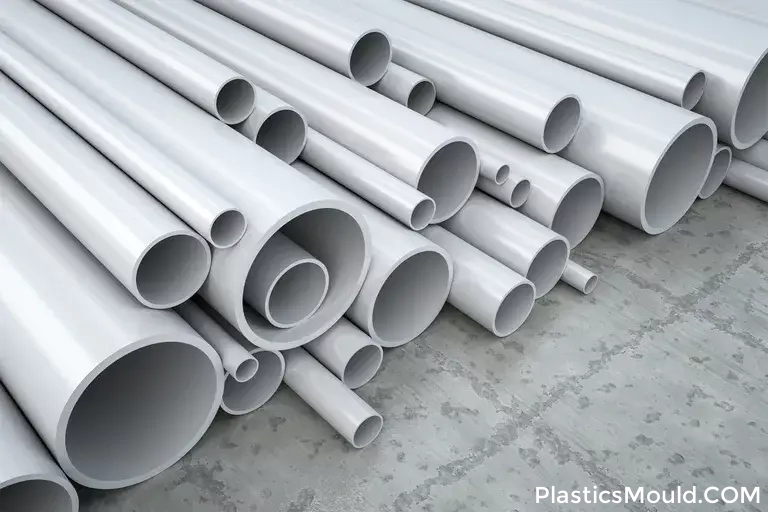
Applications of PVC
In the Construction Industry
PVC is extensively used in the construction industry due to its favorable properties. Rigid PVC is commonly employed in the manufacturing of plastic pipes for plumbing systems. These pipes are highly resistant to corrosion from water, chemicals, and other substances that may be present in the water supply or drainage systems. For example, in residential buildings, PVC pipes are used for both cold - water and hot - water supply lines, as well as for sewer and waste - water disposal. Their durability ensures a long - service life, reducing the need for frequent replacements and maintenance.
PVC is also a popular choice for making window frames. The material's excellent insulation properties help to reduce heat transfer between the interior and exterior of a building. This leads to energy savings, as less energy is required to heat or cool the building. Additionally, PVC window frames are resistant to weathering, including UV radiation, rain, and temperature variations. They maintain their color and shape over time, providing a cost - effective and aesthetically pleasing solution for building facades.
In Packaging
In the packaging industry, PVC finds various applications. It is used to make plastic bottles, especially for products such as cosmetics, pharmaceuticals, and some food items. PVC bottles offer high transparency, allowing consumers to easily see the contents inside. They also have good barrier properties, which can prevent the ingress of oxygen and moisture, helping to preserve the quality and shelf - life of the products.
PVC is also used in the production of food - grade films and sheets, which are commonly used for wrapping food products. These films provide a protective layer that can prevent contamination, maintain freshness, and enhance the visual appeal of the packaged food. However, the use of PVC in food packaging has been a subject of some controversy. There are concerns about the potential migration of plasticizers, such as phthalates, from PVC packaging into food products, which may have adverse health effects. As a result, in some regions, there are strict regulations governing the use of PVC in food - contact applications.
In Daily Life Products
PVC is a common material in many daily - life products. It is used to make imitation leather, which is often found in handbags, wallets, shoes, and furniture upholstery. Imitation leather made from PVC can mimic the appearance and texture of real leather at a lower cost. It is also easier to clean and maintain compared to natural leather, making it a popular choice for consumers who want a leather - like look without the high cost and maintenance requirements.
PVC is also used in the textile industry. It can be coated onto fabrics to add water - resistance, making them suitable for use in raincoats, tents, and outdoor gear. In addition, PVC is used to make some types of clothing accessories, such as belts and buckles, due to its durability and moldability.
In Other Industries
In the medical industry, PVC is used in the production of a variety of disposable medical devices. For example, intravenous (IV) bags and tubing are often made of flexible PVC. The flexibility of the material allows for easy handling during medical procedures, and its biocompatibility makes it suitable for contact with the human body. However, as mentioned before, there are concerns about the leaching of plasticizers from PVC medical devices, which has led to research into alternative materials or improved manufacturing processes to minimize this risk.
In the electronics industry, PVC is used as an insulating material for cables and wires. Its excellent electrical insulation properties prevent the leakage of electricity, ensuring the safe operation of electrical and electronic devices. PVC - insulated cables are widely used in household electrical appliances, power distribution systems, and communication networks.
PVC and the Environment
Environmental Concerns
The environmental impact of PVC is a complex issue that encompasses various aspects of its life cycle, from production to disposal.
During the production process, PVC manufacturing requires a significant amount of energy. Both the carbide method and the ethylene method consume large quantities of raw materials and energy. For example, in the carbide method, high - temperature reactions in the production of calcium carbide consume a great deal of electricity. This high energy consumption not only contributes to the depletion of energy resources but also results in increased greenhouse gas emissions, which are associated with climate change.
Moreover, the production of PVC can release harmful pollutants. In the vinyl chloride monomer (VCM) production stage, there is a risk of VCM leakage. VCM is a known carcinogen. Even small amounts of VCM released into the environment can pose a threat to human health and the ecosystem. Additionally, the use of certain catalysts and additives in the production process may also lead to the generation and release of other pollutants.
When PVC products are in use, there are concerns about the potential release of harmful substances. In flexible PVC products, plasticizers such as phthalates are often added. These plasticizers can leach out over time, especially when the PVC product is in contact with certain substances like food or in high - temperature environments. Phthalates have been associated with a range of health issues, including endocrine disruption, and their presence in the environment can also have negative impacts on wildlife.
After the end - of - life of PVC products, disposal becomes a major problem. PVC is a non - biodegradable material. When PVC waste is sent to landfills, it can persist in the environment for hundreds of years, taking up valuable landfill space and potentially leaching harmful substances into the soil and groundwater. If PVC waste is incinerated without proper treatment, it can release highly toxic substances such as dioxins. Dioxins are extremely harmful to human health and the environment, causing various health problems including cancer, and they can also accumulate in the food chain.
Recycling and Sustainability Efforts
Given the environmental concerns associated with PVC, recycling and sustainability efforts are of great importance.
There are several methods for recycling PVC. Mechanical recycling is one of the most common methods. In this process, PVC waste is collected, sorted, and then shredded and melted. The melted PVC is then re - processed into new products. For example, PVC pipes that have reached the end of their service life can be mechanically recycled and turned into new pipes or other PVC - based products. Mechanical recycling is relatively straightforward and cost - effective for some types of PVC waste. However, it has limitations. The quality of the recycled PVC may degrade after multiple recycling cycles, and it is mainly suitable for recycling PVC products with a relatively simple composition and without significant contamination.
Chemical recycling is another approach. This method involves breaking down the PVC polymer into its monomers or smaller chemical components through chemical reactions. These components can then be used to produce new PVC or other chemicals. For instance, through a process called pyrolysis, PVC can be heated in the absence of oxygen to break it down into its basic chemical building blocks. Chemical recycling has the potential to produce high - quality recycled materials and can handle more complex PVC waste streams. However, it is often more energy - intensive and requires more advanced technology and infrastructure.
In addition to recycling, there are other sustainability efforts related to PVC. Some manufacturers are working on developing PVC products with reduced environmental impact. This includes using more sustainable raw materials, such as bio - based feedstocks for the production of PVC. There are also efforts to improve the production processes to reduce energy consumption and pollutant emissions. For example, new catalyst systems are being explored to make the polymerization process more efficient and environmentally friendly.
Furthermore, promoting the circular economy concept in the PVC industry is crucial. This involves designing PVC products for easier disassembly and recycling, establishing efficient waste collection and recycling systems, and encouraging the reuse of PVC products. By implementing these sustainability measures, the PVC industry can strive to reduce its environmental footprint and move towards a more sustainable future.
Conclusion
In conclusion, PVC is an incredibly versatile and important synthetic polymer with a wide range of applications across various industries. Its unique combination of physical and chemical properties, such as strength, durability, insulation, and flame - retardancy, make it an ideal material for uses in construction, packaging, daily - life products, medical devices, and electronics.
However, the environmental concerns associated with PVC, including energy consumption during production, potential release of harmful substances, and challenges in disposal, cannot be ignored. As we move forward, the future development of PVC will be closely tied to sustainability. The continued improvement of recycling technologies, the development of more sustainable production processes, and the use of environmentally friendly additives will be crucial for the long - term viability of PVC in the global market.
We encourage readers to stay informed about the latest developments in PVC technology and sustainability efforts. Whether you are a consumer, a professional in the plastics industry, or an environmental enthusiast, understanding the environmental impact of PVC and the steps being taken to address it can help us make more informed decisions. By supporting sustainable practices and products, we can all contribute to a more environmentally friendly future while still benefiting from the many advantages that PVC has to offer.
-
TAG:
No more
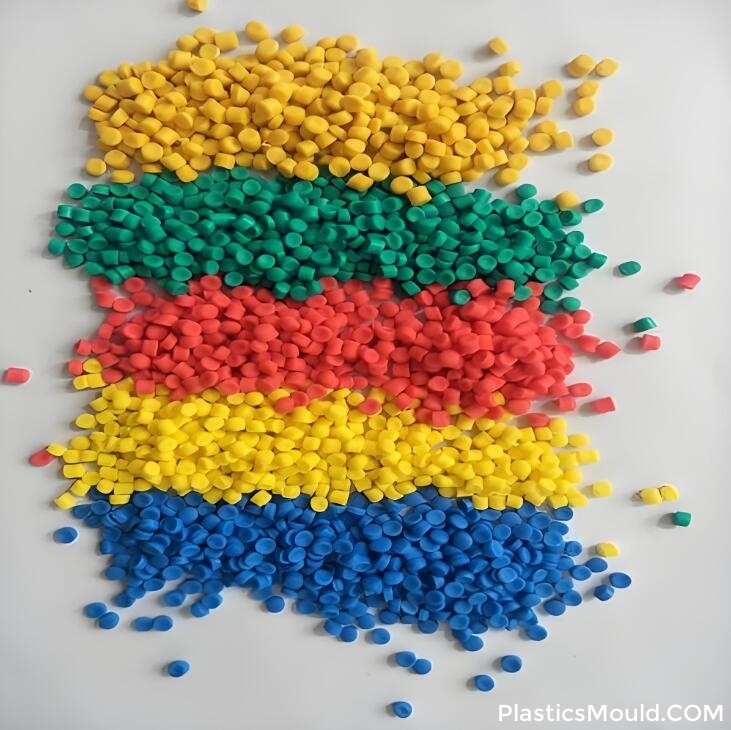
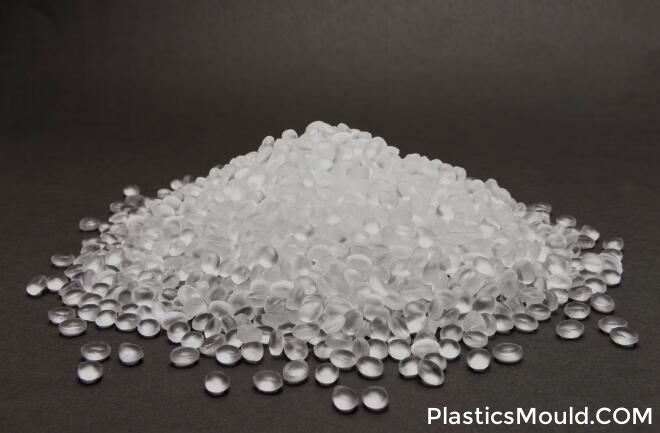
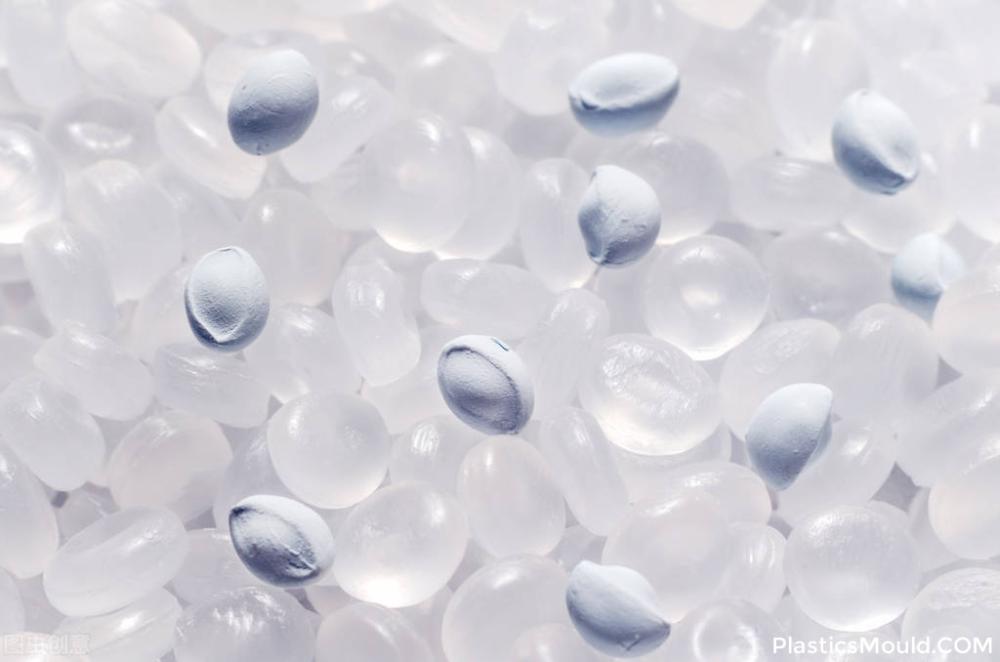
Send Your Inquiry Now